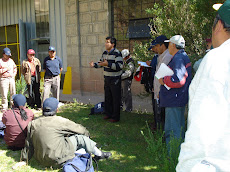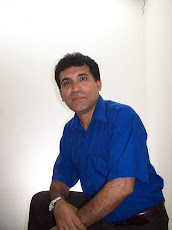
Photo: Department of Energy/National Renewable Energy Laboratory
Tuesday, 24 March 2009 13:24 The concept of delaying global warming by adding particles into the upper atmosphere to cool the climate could unintentionally reduce peak electricity generated by large solar power plants by as much as one-fifth, according to a new NOAA study. The findings appear in Environmental Science and Technology.
“Injecting particles into the stratosphere could have unintended consequences for one alternative energy source expected to play a role in the transition away from fossil fuels,” said author Daniel Murphy, a scientist at NOAA’s Earth System Research Laboratory in Boulder, Colo.
The Earth is heating up as fossil-fuel burning produces carbon dioxide, the primary heat-trapping gas responsible for man-made climate change. To counteract the effect, some geoengineering proposals are designed to slow global warming by shading the Earth from sunlight.
Among the ideas being explored is injecting small particles into the upper atmosphere to produce a climate cooling similar to that of large volcanic eruptions, such as Mt. Pinatubo’s in 1991. Airborne sulfur hovering in the stratosphere cooled the Earth for about two years following that eruption.
Murphy found that particles in the stratosphere reduce the amount and change the nature of the sunlight that strikes the Earth. Though a fraction of the incoming sunlight bounces back to space (the cooling effect), a much larger amount becomes diffuse, or scattered, light.
On average, for every watt of sunlight the particles reflect away from the Earth, another three watts of direct sunlight are converted to diffuse sunlight. Large power-generating solar plants that concentrate sunlight for maximum efficiency depend solely on direct sunlight and cannot use diffuse light.
Murphy verified his calculations using long-term NOAA observations of direct and diffuse sunlight before and after the 1991 eruption.
After the eruption of Mt. Pinatubo, peak power output of Solar Electric Generating Stations in California, the largest collective of solar power plants in the world, fell by up to 20 percent, even though the stratospheric particles from the eruption reduced total sunlight that year by less than 3 percent.
“The sensitivity of concentrating solar systems to stratospheric particles may seem surprising,” said Murphy. “But because these systems use only direct sunlight, increasing stratospheric particles has a disproportionately large effect on them.”
Nine Solar Electric Generating Stations operate in California and more are running or are under construction elsewhere in the world. In sunny locations such systems, which use curved mirrors or other concentrating devices, generate electricity at a lower cost than conventional photovoltaic, or solar, cells.
Flat photovoltaic and hot water panels, commonly seen on household roofs, use both diffuse and direct sunlight. Their energy output would decline much less than that from concentrating systems.
Even low-tech measures to balance a home’s energy, such as south-facing windows for winter heat and overhangs for summer shade, would be less effective if direct sunlight is reduced.
National Oceanic and Atmospheric Administration







No hay comentarios:
Publicar un comentario